�
Thank you for purchasing this DC-1030i digital camera. Please read these operating
instructions carefully in order to use the product correctly. Keep the instructions in a safe
place after reading so that you can refer to them later.
Disclaimer
We assume no responsibility over and above the provisions of the Product Liability Law for
damages suffered by the user or third parties as a result of inappropriate handling of the
product or its accessories, or by their operational failure and by their use. We reserve the right
to make changes to this product and its accessories without prior notice.
Warning! Never try to open the camera or to take it apart. This will invalidate all guarantee
claims.
Using your batteries
For best performance and prolonged battery life, we recommend the use of AA lithium or
rechargeable NiMH batteries.
Extending battery life
The following functions use up a great deal of battery power and should therefore only be
used occasionally:
• Excessive use of flash
• Editing images on the camera display
• Using the camera display as a view finder
The battery life can be affected by soiling. Please clean the contacts with a clean and dry
cloth before putting the batteries in the camera.
Battery performance drops at temperatures below 5 °C (41 °F). If you use the camera at low
temperatures you should have replacement batteries to hand and ensure they do not get too
cold. Please note: you should not dispose of cold and seemingly flat batteries because these
batteries may work again at room temperature
i
Precautions
Before using the camera, please ensure that you read and understand the safety
precautions described below. Always ensure that the camera is operated
correctly.
Do not aim the camera directly into the sun or other intense light sources which
could damage your eyesight.
Do not try to open the case of the camera or attempt to modify this camera in
any way. High-voltage internal components create the risk of electric shock
when exposed. Maintenance and repairs should be carried out only by authorized
service providers.
Do not fire the flash too close to the eyes of animals or people, especially for
young children. Eye damage may result. In particular, remain at least one meter
away from infants when using flash.
Keep the camera away from water and other liquids. Do not use the camera with
wet hands. Never use the camera in the rain or snow. Moisture creates the
danger of electric shock.
Keep the camera and its accessories out of the reach of children and animals to
prevent accidents or damage to the camera.
If you notice smoke or a strange odor coming from the camera, turn the power
off immediately. Take the camera to the nearest authorized service center for
repair. Never attempt to repair the camera on your own.
Use only the recommended power accessories. Use of power sources not
expressly recommended for this equipment may lead to overheating, distortion
of the equipment, fire, electrical shock or other hazards.
ii
ii
�
FCC Compliance and Advisory
This device complies with Part 15 of the FCC Rules. Operation is subject to the following two
conditions: 1.) this device may not cause harmful interference, and 2.) this device must accept any
interference received, including interference that may cause unsatisfactory operation.
This equipment has been tested and found to comply with the limits for a Class B peripheral, pursuant
to Part 15 of the FCC Rules. These limits are designed to provide reasonable protection against
harmful interference in a residential installation. This equipment generates, uses, and can radiate radio
frequency energy and, if not installed and used in accordance with the instructions, may cause harmful
interference to radio communication. However, there is no guarantee that interference will not occur in
a particular installation. If this equipment does cause harmful interference to radio or television
reception, which can be determined by turning the equipment off and on, the user is encouraged to try
to correct the interference by one or more of the following measures.
Reorient or relocate the receiving antenna.
Connect the equipment to an outlet on a circuit different from that to which the receiver is
Increase the separation between the equipment and receiver.
connected.
Consult the dealer or an experienced radio/TV technician for help.
Any changes or modifications not expressly approved by the party responsible for compliance could
void the user’s authority to operate the equipment. When shielded interface cables have been
provided with the product or when specified additional components or accessories have elsewhere
been designated to be used with the installation of the product, they must be used in order to ensure
compliance with FCC regulations.
iii
�
Contents
GETTING STARTED
USING THIS MENU
SCOPE OF DELIVERY
ATTACHING THE WRIST STRAP
PARTS OF THE CAMERA
INSERTING THE BATTERIES
LOW BATTERY INDICATOR
ABOUT BATTERY TYPE
INSERTING THE MEMORY CARD
ABOUT CAMERA MEMORY
DCF PROTOCOL
1
1
2
2
3
5
5
5
6
6
6
SETTING THE DISPLAY LANGUAGE / DATE &
TIME
SETTING THE DISPLAY LANGUAGE
SETTING THE DATE & TIME
USING THE LCD MONITOR
REC MODE
PLAYBACK MODE
CHANGING THE LCD STATUS
BASIC OPERATION
TURNING THE POWER ON AND OFF
POWER SAVING FUNCTION
CHANGING THE MODE
SWITCHING BETWEEN REC MODE AND
PLAYBACK MODE
SELECTING THE REC MODE
SELECTING THE ASM MODE
USING THE MENUS
REC MENU
SETUP MENU
BASIC RECORDING
RECORDING STILL IMAGES
USING THE Q MODE
SETTING IMAGE SIZE AND QUALITY
iv
7
7
8
9
9
10
11
12
12
12
13
13
13
14
15
15
16
19
19
20
21
USING THE ZOOM FUNCTION
USING THE FLASH
USING THE MACRO
USING THE SELF-TIMER & BURST
USING THE APERTURE PRIORITY
USING THE SHUTTER PRIORITY
USING THE MANUAL EXPOSURE
RECORDING MOVIE CLIPS
SETTING THE MOVIE SIZE
RECORDING AUDIO CLIPS
PLAYING BACK AUDIO CLIPS
RECORDING A VOICE MEMO
PLAYING BACK A VOICE MEMO
OTHER RECORDING FUNCTIONS
SETTING THE METERING
SETTING THE WHITE BALANCE
SETTING THE ISO
SETTING THE EXPOSURE
SETTING THE AEB
SETTING THE HIGHLIGHT
SETTING THE SHARPNESS
SETTING THE PHOTO EFFECT
SETTING DATE STAMP
PLAYBACK
22
23
24
25
26
26
27
28
28
29
29
30
30
31
31
31
32
32
32
32
33
33
33
34
PLAYING BACK IMAGES
34
34
PLAYING BACK MOVIE CLIPS
MAGNIFYING & TRIMMING STILL IMAGES 35
36
VIEWING IN THUMBNAIL
36
PLAYING A SLIDE SHOW
37
37
38
38
39
39
DELETING A SINGLE FILE
DELETING MULTIPLE FILES
DELETING ALL FILES
PROTECTING A SINGLE FILE
PROTECTING ALL FILES
DELETING FILES
�
PROTECTING MULTIPLE FILES
EDITING IMAGES
40
41
41
ROTATING STILL IMAGES
41
CHANGING THE IMAGE SIZE
CHANGING THE IMAGE WITH EFFECTS 42
42
43
44
COPYING THE FILES
SETTING THE DPOF
CHOOSING A STARTUP IMAGE
MAKING CONNECTIONS
45
CONNECTING THE CAMERA TO A TV
CONNECTING THE CAMERA TO A PC
45
46
46
USING THE CARD READER
CONNECTING THE CAMERA TO A COMPUTER
46
WITH THE USB CABLE
SOFTWARE INSTALLATION
47
SYSTEM REQUIREMENTS
INSTALLING THE SOFTWARE
INSTALLING THE SOFTWARE DRIVER
INSTALLING ULEAD PHOTO EXPLORER 8 SE
BASIC
INSTALLING VIDEOSTUDIO 7 SE VCD
USING THE SOFTWARE
47
48
49
49
50
50
APPENDIX
ABOUT THE FOLDER & FILE NAME
FOLDER STRUCTURE
FILE NAMING
TROUBLESHOOTING
SPECIFICATIONS
51
51
51
51
52
53
V
�
Getting Started
Using This Menu
Getting Started
This section contains information you should know before using this camera.
Basic Operation
This section explains all recording features of this camera.
Basic Recording
This section explains how to record still images, movies, and audio files.
Other Recording Functions
This section explains common operations about recording images.
Playback
This section explains playback, delete, and edit functions of still images, movies
and audio files.
Making Connections
This section tells you how to connect this camera to a computer or TV.
Software Installation
This section tells you how to install the software that comes in CD-ROM.
Appendix
This section describes the troubleshooting and the camera specification.
The meanings of the symbols used in this user's manual are explained below:
This indicates cautions that should be read before using these
functions.
CCaauuttiioonn
TTiippss
This indicates the useful information when using this camera.
This indicates the reference page.
1
�
USB cable
AV cable
Hand strap
2 x AA batteries
Scope of delivery
Camera
Pouch
Software installation
CD-ROM
User’s Manual
Attaching the Wrist Strap
Attach the wrist strap to your camera as shown.
CCaauuttiioonn
Do not swing the camera around by the strap.
2
�
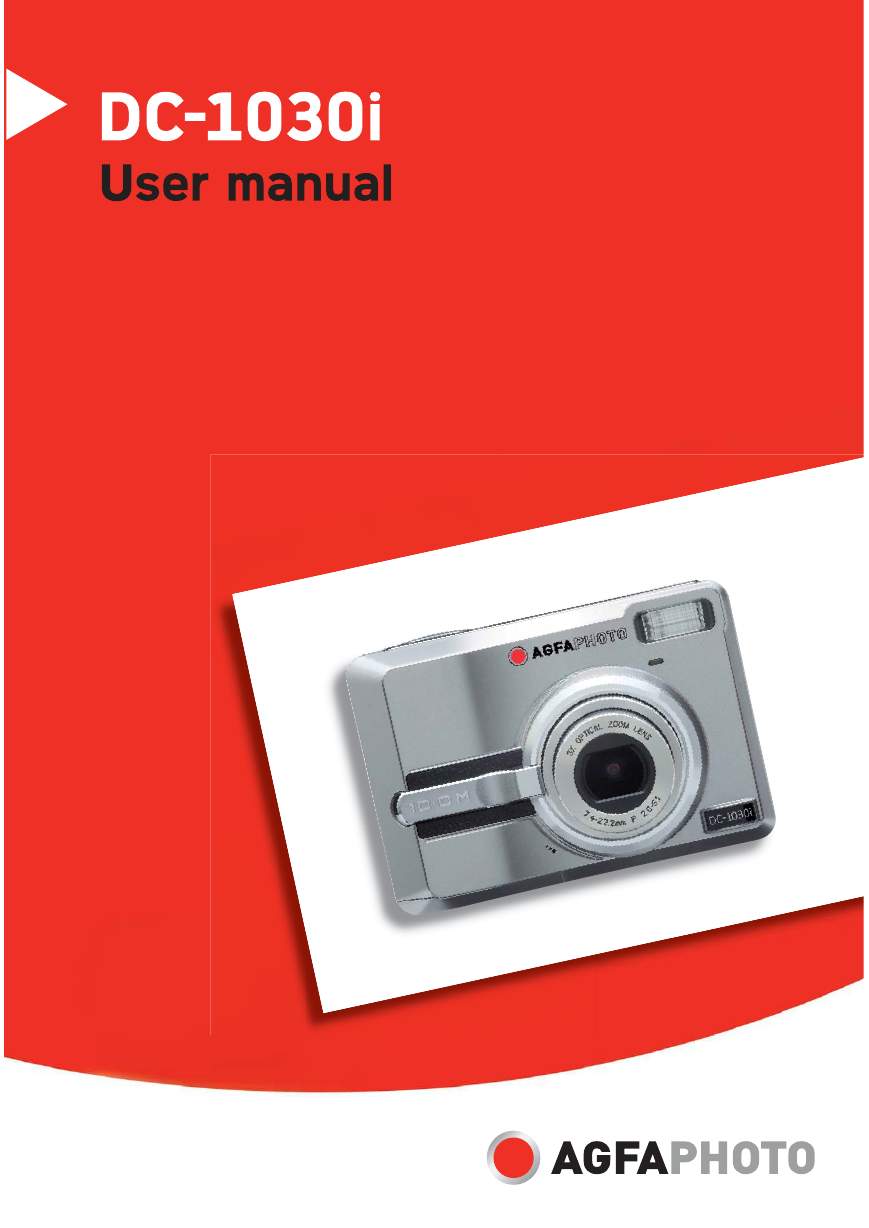

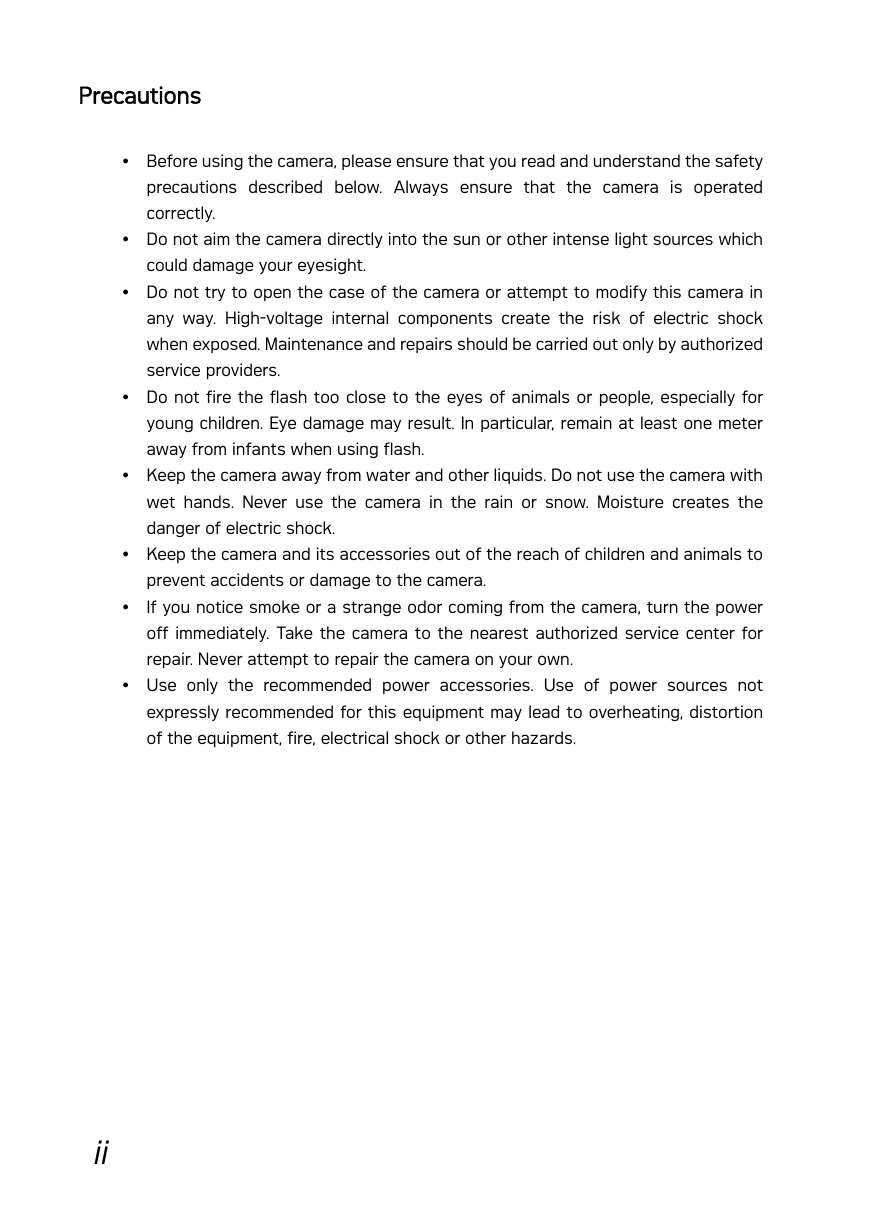

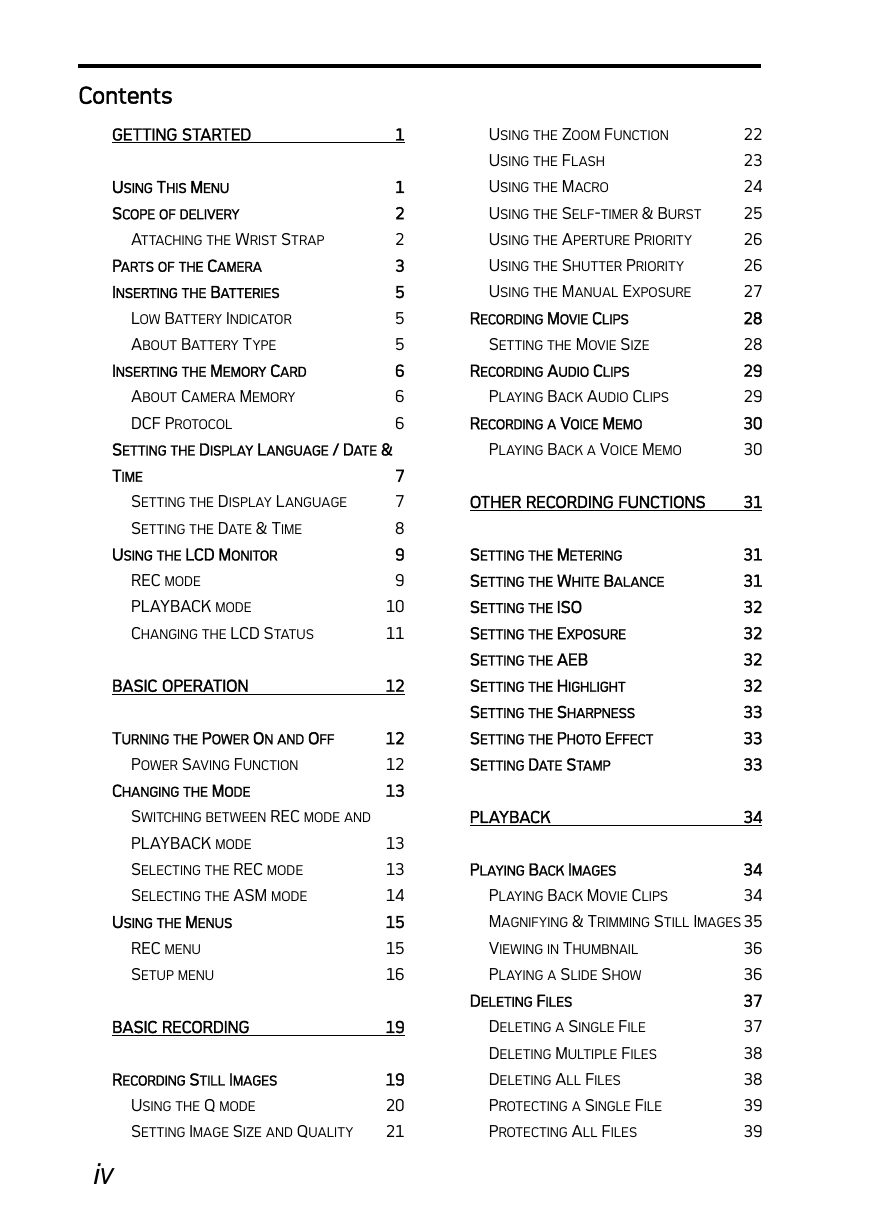
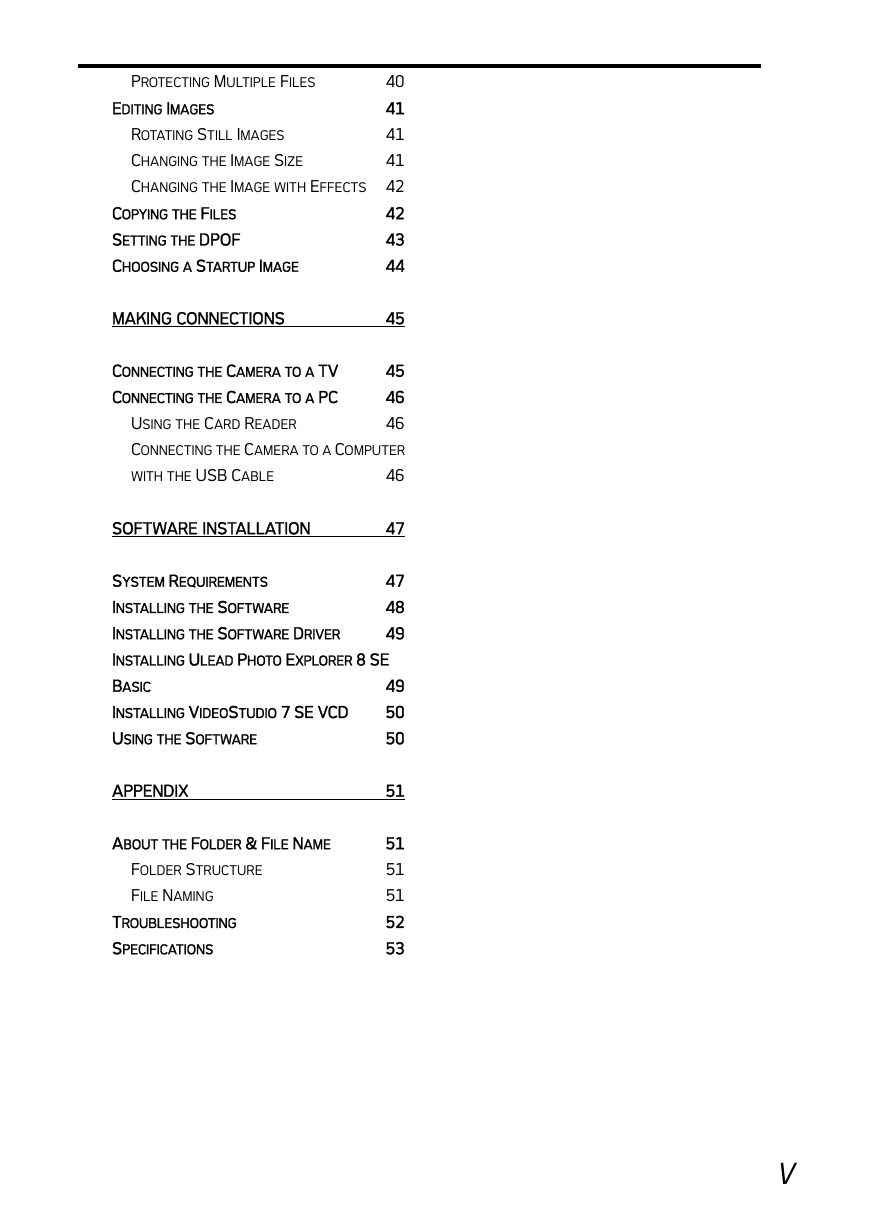
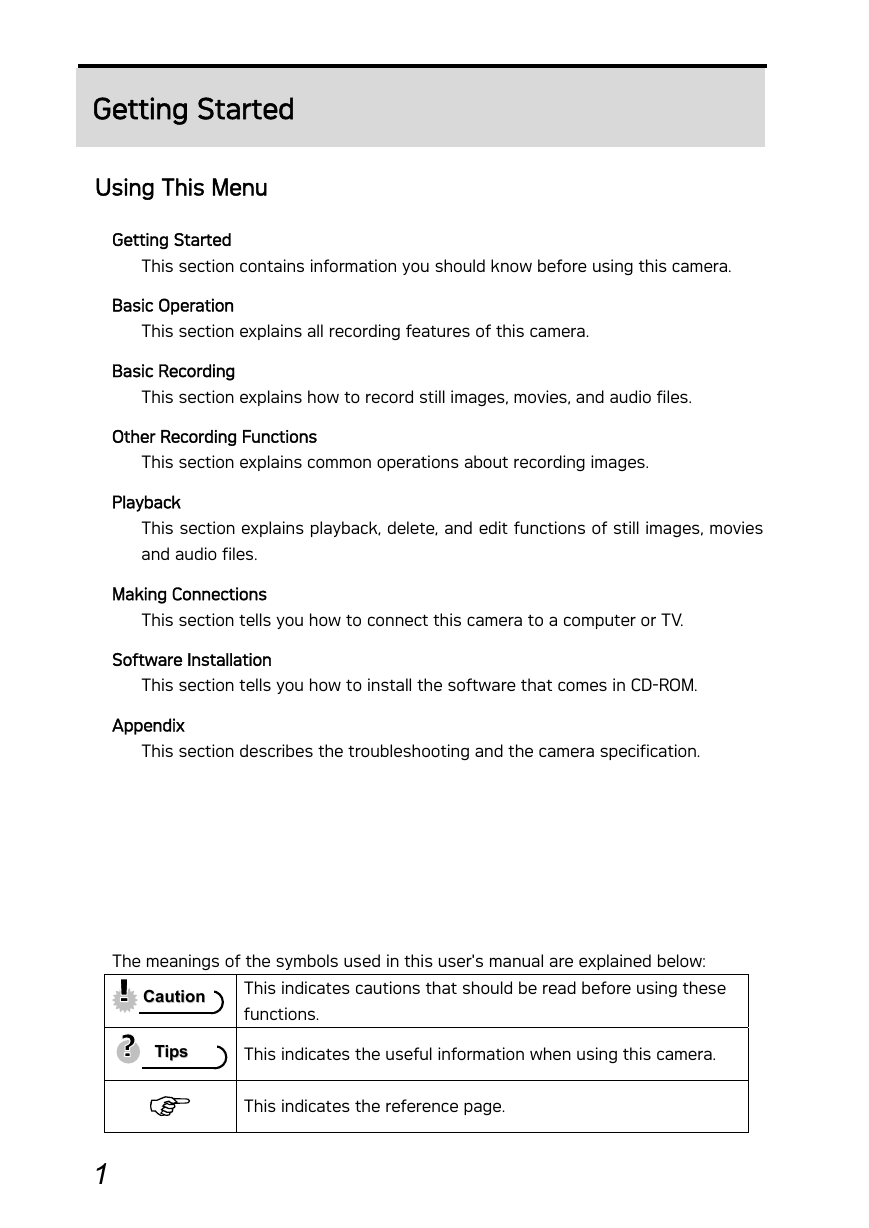









 2023年江西萍乡中考道德与法治真题及答案.doc
2023年江西萍乡中考道德与法治真题及答案.doc 2012年重庆南川中考生物真题及答案.doc
2012年重庆南川中考生物真题及答案.doc 2013年江西师范大学地理学综合及文艺理论基础考研真题.doc
2013年江西师范大学地理学综合及文艺理论基础考研真题.doc 2020年四川甘孜小升初语文真题及答案I卷.doc
2020年四川甘孜小升初语文真题及答案I卷.doc 2020年注册岩土工程师专业基础考试真题及答案.doc
2020年注册岩土工程师专业基础考试真题及答案.doc 2023-2024学年福建省厦门市九年级上学期数学月考试题及答案.doc
2023-2024学年福建省厦门市九年级上学期数学月考试题及答案.doc 2021-2022学年辽宁省沈阳市大东区九年级上学期语文期末试题及答案.doc
2021-2022学年辽宁省沈阳市大东区九年级上学期语文期末试题及答案.doc 2022-2023学年北京东城区初三第一学期物理期末试卷及答案.doc
2022-2023学年北京东城区初三第一学期物理期末试卷及答案.doc 2018上半年江西教师资格初中地理学科知识与教学能力真题及答案.doc
2018上半年江西教师资格初中地理学科知识与教学能力真题及答案.doc 2012年河北国家公务员申论考试真题及答案-省级.doc
2012年河北国家公务员申论考试真题及答案-省级.doc 2020-2021学年江苏省扬州市江都区邵樊片九年级上学期数学第一次质量检测试题及答案.doc
2020-2021学年江苏省扬州市江都区邵樊片九年级上学期数学第一次质量检测试题及答案.doc 2022下半年黑龙江教师资格证中学综合素质真题及答案.doc
2022下半年黑龙江教师资格证中学综合素质真题及答案.doc